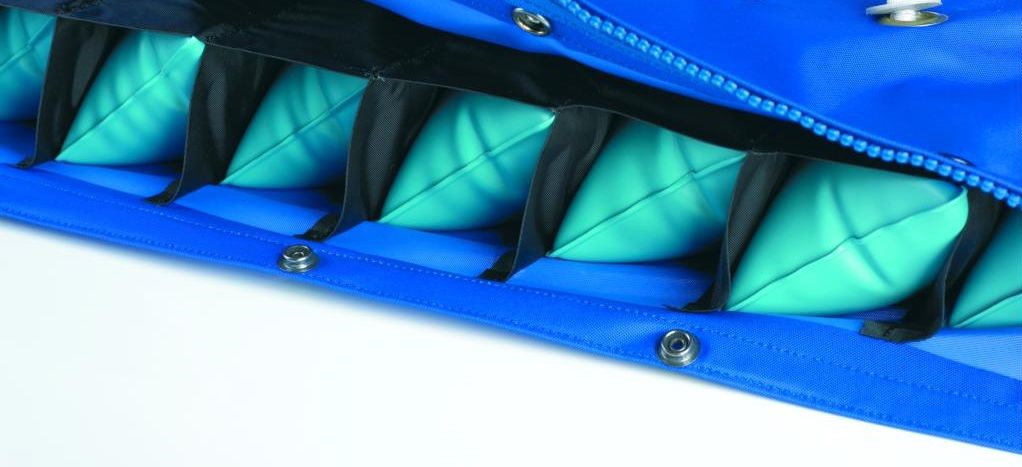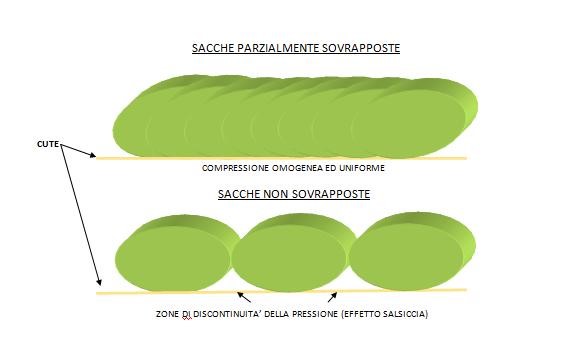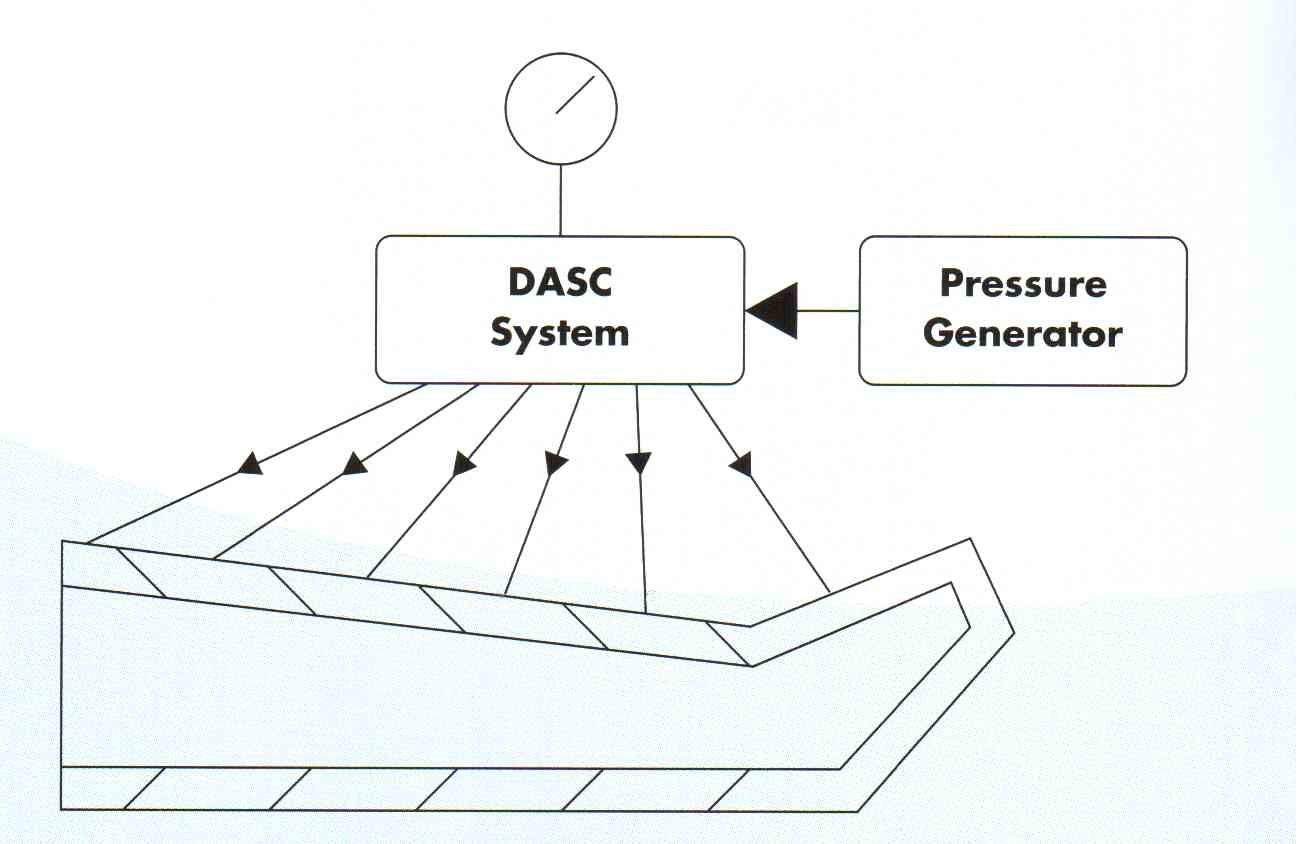The professional equipment for home use that Fisiopress offers are two:
- FP 4
- FP 4/8
The presence of two models derives essentially from the analysis of the different applicative and practical needs that the various operators can observe on the basis, and above all, of the pathologies treated.
First of all, let's see the characteristics of these devices: what they have in common and what differentiates them.
COMMON CHARACTERISTICS TO ALL THE DEVICES
Let's start from the common characteristics which are the strong point of Fisiopress projects:
- Truly sequential cycle
- Partially overlapping internal pneumatic sacs
- A.S.C.(Distribution through internal communicating sectors)
- Display of the pressure actually applied
REALLY SEQUENTIAL OPERATING CYCLE
The operating cycle represents the sequence of operations that the device performs and consists of two distinct phases: the compression and the decompression phases whose duration is respectively 24 seconds and 6 seconds.
The truly sequential term expresses the modality in which the compression phase takes place: it begins with the inflation of the first chamber (the most distal or peripheral one) which in the case of the leg corresponds to the foot, while in the case of the arm to the hand, and continues with the inflation of the second chamber (the next one in the periphery-center or distal-proximal direction) keeping the first chamber under pressure.
It still continues with the inflation of the third chamber, then the fourth, always keeping the previous ones under pressure, up to the last chamber of the garment (leg or arm). At this point the deflation of the chambers takes place (decompression phase) for 6 seconds, and then the compression phase starts again.

The term “real” was added to “sequential” to differentiate this cycle (recognized as valid in international scientific literature) from others which, for example, which inflate one sector at a time (inflating of the first sector, inflating of the second sector and deflation of the first, inflating of the third sector and deflation of the second, etc….).
PARTIALLY OVERLAPPING COMPRESSION BAGS
In all Fisiopress systems, the internal pneumatic bags are contained in special housings inside the garments (leg, arm) which keep them parallel and partially overlapped.
The partial overlapping determines a continuity in the progressive application of the pressure, eliminating any its discontinuity, between sector and sector, which would create an accumulation of liquids between a compressive sector and the following one if there was no overlapping. The image below gives a very precise idea of what has been said:

The partial overlapping system,in the application of pressure, guarantees the continuity necessary for a perfect thrust in distal to proximal direction, set by the previously described sequential operating cycle. In this way, partial stagnation of liquids in the intermediate areas between pneumatic bag andpneumatic bag is avoided. Another important consequence of the partial overlap is the way the air bags are arranged during the compression phase sequence. The following image gives a precise idea of how pressure is applied:
 The description how the difference between garments with partially overlapping internalpneumatic sacs and garments with parallel internal pneumatic sacs work on treated limb. The pressure is "spread" in a very different way.
The description how the difference between garments with partially overlapping internalpneumatic sacs and garments with parallel internal pneumatic sacs work on treated limb. The pressure is "spread" in a very different way.The partial overlap causes that the compression bag to be placed obliquely with respect to the skin where the pressure is applied, in such a way that the pressure vector has two components: a radial one (perpendicular to the skin) and a tangential one to the skin itself.
The resulting compression allows an excellent distribution of the pressure along the depth of the area where it is applied and at the same time a correct thrust in the desired direction. From a maintenance point of view, the internal structure of the terminals, which keeps the pneumatic bags partially overlapping, allows, if one of them wears out over time, their simple replacement without having to change the whole garment, thus permitting its maintenance with negligible costs.
Replacing the pneumatic bag is a simple, easy and immediate operation and can be performed by the same operator who uses the device without any additional cost for a specialized technician or long waiting times. The immediate availability of replacement pneumatic bags has been a Fisiopress prerogative for years and a source of pride for the company and customer satisfaction.
DASC SYSTEM (Distribution through internal communicating sectors)
This system is a Fisiopress exclusive projectand has been studied to perform a homogeneous pressure in all sections of the garment so that it adapts itself to the geometry of the limb where it is applied, while maintaining equal pressure in all sections.
In fact, the D.A.S.C. eliminates any possible pressure discontinuity along the entire length of the treated limb, thus allowing effective thrust along the desired direction.

The DASC system works in this way: during the truly sequential compression phase, once the first sector has been inflated, the inflation of the second one starts, and, internally the device, this second sector is put in communication with the first. The communication between the two sectors allows the air to flow and keeps the pressure between the two sectors perfectly homogeneous. The same occurs when inflating the third sector which is joined to the first two, now keeping the pressure homogeneous between all the three sectors and so on up to the last sector.
DISPLAY OF THE PRESSURE REALLY APPLIED
This is a really important point. Being certain that the pressure displayed is the one actually applied is essential for an instrument that uses pressure as a therapeutic element.
The pressure value displayed on the graphic scale or via the analogue manometer is exactly the one applied as the instrument directly reads the pressure on all the pneumatic bags inflates as if it were the pressure value read on the manometer of a sphygmomanometer applied to the patient's limb.
Furthermore, the D.A.S.C. , by connecting all the sectors as they are inflated, ensures that the real pressure read is the one common to all the sectors inflated at that moment.
CHARACTERISTICS THAT DIFFERENTIATE THE TWO PROFESSIONAL EQUIPMENT FOR HOME USE
The two professional systems only differ in the number of exits and, therefore, in the number of sectors into which the garment is divided (Leg Sleeve or Arm Sleeve):
FP 4 - 6 OUTPUTS DEVICE
FP 4/8 DEVICE - 8 OUTPUTS
So each system has its specific garments with 6 or 8 subdivision sectors.The design of the two devices corresponds to very specific criteria deriving from application needs related to the type of problem of the patient, the frequency of work and the available budget.
CRITERIA FOR SELECTING THE DIFFERENT MODELS. WHICH ONE TO CHOOSE ?
The first criterion for real evaluation of a device, in relation to the number of outlets and the subdivision of its terminals into sectors, is immediate: the greater the number of sectors, the more evenly the pressure is applied and the greater the effectiveness.
However, since there are different problems to deal with and different operational requirements, let's go into more practical detail, bearing in mind, as underlined in the previous paragraphs, that all devices, beyond the number of outputs, have the same functional characteristics.
We evaluate the device to choose according to the problem to be addressed. Generally these problems can be grouped into these 4 categories:
- swollen legs, water retention, cellulite, venous disorders
- venous and/or lymphatic edema
- lower limb lymphedema
- upper limb lymphedema
These are different situations that require different solutions: if you are followed by a good specialist, he will be able to indicate the therapy or, better, the therapies to be used and the most suitable device to guarantee you good results, but if you like to have an idea of what you need, try to follow us.
SWOLLEN LEGS, WATER RETENTION, CELLULITE, VENOUS DISORDERS
All these problems are often identified as aesthetic problems mainly by young people.
It's correct. But one thing is the personal feeling observing a problem, another is how you solve it.
The problem, indeed, using the right term, the pathology, is medical one and the treatment must be the same!
WHAT SHOULD BE DONE TO IMPROVE THIS CONDITION AND MAINTAIN THE BENEFITS OVER TIME?
To push the stagnant fluids, venous blood and interstitial fluids, along their natural (physiological) direction: the venous blood towards the heart and the fluids towards the drainage areas. Furthermore, the compression system must be such as to be able to rebalance the pressures that regulate the mechanism of infra- and intra-cellular liquids. A good compression therapy device can play a fundamental role: it is therefore necessary to acquire a system that is designed to perform the actions described above. It must therefore have the following characteristics:
- Truly sequential cycle
- Partially overlapping internal pneumatic bags
- Homogeneous pressure distribution (D.A.S.C. system)
- At least 4 output sectors
VENOUS AND/OR LYMPHATIC EDEMAS
These problems (pathologies) result from an no correct work of the venous system (difficulty of blood returning from the periphery of the body, lower and upper limbs, to the heart) and of the peripheral lymphatic system.
The lymphatic system runs almost parallel to the venous system and takes care of transporting cellular waste products (liquids and proteins) to the "collection points" (lymph nodes in the groin or thoracic duct) to be subsequently discharged.
Venous and lymphatic edema cause swelling, stiffess and heaviness of limbs and tend to be chronic, getting worse over time.
Specialists recommend compression therapy, lymphatic drainage, bandages and elastic compression stockings.
WHAT SHOULD BE DONE TO IMPROVE THE RPOBLEM AND MAINTAIN THE BENEFITS OVER TIME?
A good compression therapy device, if serious and well designed, can play a fundamental role within the integrated physical therapy: it is therefore necessary to buy a system that is designed and built to have good performances, as previous described:
- Truly sequential cycle
- Partially overlapping internal pneumatic bags
- Homogeneous pressure distribution (D.A.S.C. system)
- At least 4 or 6 output sectors
LOWER LIMB LYMPHOEDEMA
Lower limb lymphedema can be congenital or deriving from various causes, perhaps not all yet well defined and studied, including surgical ones with the removal of all or part of the lymph nodes in the groin.
However, the problem (pathology) becomes chronic and must be faced with a treatment that includes compression therapy, lymphatic drainage, bandages and elastic stockings.
WHAT SHOULD BE DONE TO IMPROVE THE CONDITION OF THE LIMB AND MAINTAIN THE BENEFITS OVER TIME?
It is necessary to push the lymph that stagnates along its natural (physiological) direction, i.e. towards the relative discharge collectors: in particular, for the lower limbs, the lymph nodes of the groin.
Also in this case a good compression therapy device, if serious and well designed, can play a fundamental role within the integrated physical therapy: it is therefore necessary to buy a system that is designed and built to have good performances, as previous described:
- Truly sequential cycle
- Partially overlapping internal pneumatic bags
- Homogeneous pressure distribution (D.A.S.C. system)
- At least 6 or 8 output sectors
UPPER LIMB LYMPHOEDEMA (SECONDARY LYMPHOEDEMA)
Upper limb lymphedema or secondary lymphedema is normally a consequence of a breast mastectomy operation (partial or total removal of the lymph nodes under the armpits) or of a subsequent radiation treatment which unfortunately damages the lymph nodes present. It can develop a short time after surgery or treatments, as well as after many years due to an insect bite or a thorn (rose or other similar plant) or excessive or prolonged exertion.
This lymphedema is one of the most delicate to treat and requires from compression therapy point of view the best of available technology.
WHAT SHOULD BE DONE TO IMPROVE THE CONDITION OF THE ARM AND MAINTAIN THE BENEFITS OVER TIME?
To push the stagnant lymph along its natural (physiological) direction towards the relative discharge collectors: in particular, it is the thoracic duct that collects the lymph to be discharged.
It can be understood how specially in this case a good pressotherapy device, if serious and well designed, can play a fundamental role within the integrated therapeutic protocol: it is therefore necessary to have a system that is designed and built to perform the actions described above. It must therefore have the following characteristics:
- ruly sequential cycle
- Partially overlapping internal pneumatic bags
- Homogeneous pressure distribution (D.A.S.C. system)
- 8 output sectors


